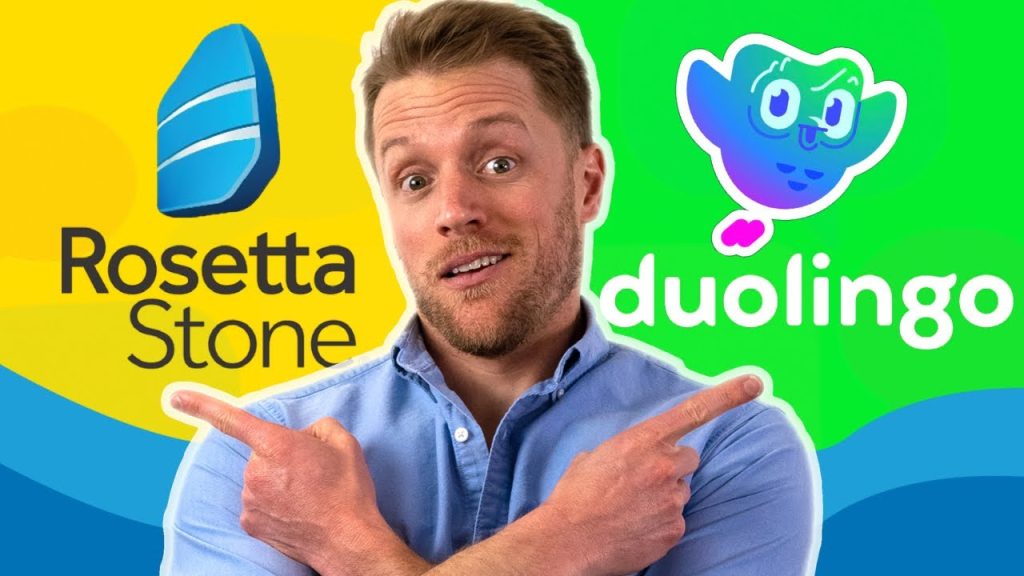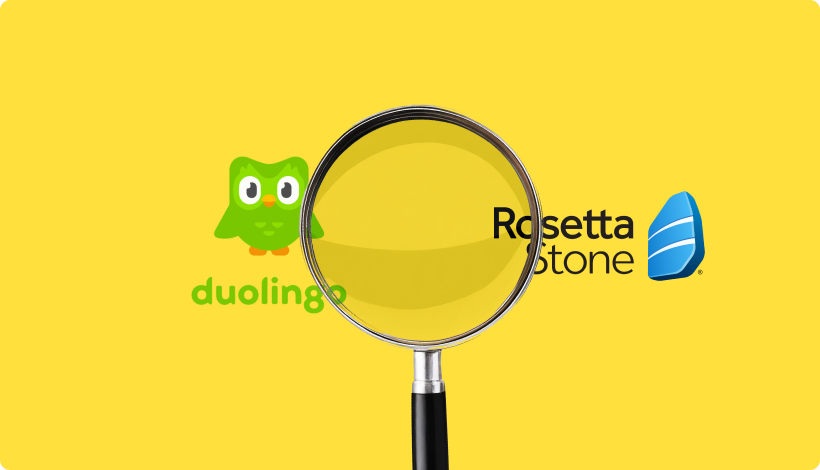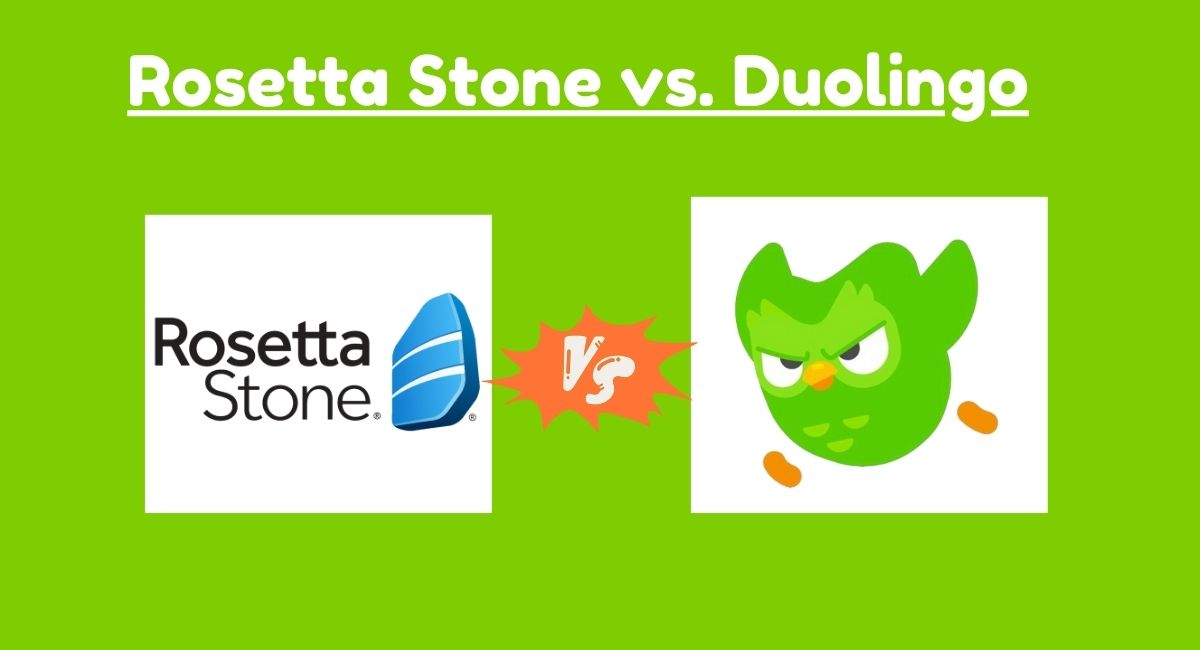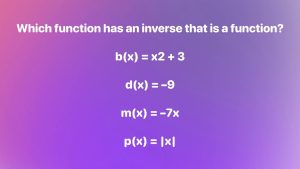
Introduction
When it comes to language learning, two of the most popular platforms out there are Duolingo and Rosetta Stone. Two platforms that have revolutionized language learning, offering comfort and ease in one’s hands. But deciding between them can become an issue in and of itself.
In this article, we will pit Duolingo and Rosetta Stone head-to-head, comparing all factors most relevant to learners’ price, studying methodologies, language offerings, user interfaces, and effectiveness.
Overview of Duolingo and Rosetta Stone
What Is Rosetta Stone?
Rosetta Stone is a name that is familiar in many families. Founded in 1992, it learns in an immersive format, with a use of grammar and vocabulary in terms of pictures, sound, and sentences. It seeks to mimic in a learner, in a target language, the way one learns one’s native language naturally. It seeks to cause learners to think in a target language, not in translation, in such an immersion.
What Is Duolingo?
Duolingo, launched in 2011, is a free language platform with a gamified model. Duolingo learns through bite-sized lessons and tests, with an interactive and fun environment for studying. Duolingo utilizes a combination of visualization, listening exercise, and translation exercise to reinforce concepts. Duolingo’s app is vibrant, welcoming, and encourages learners to track improvement.
Cost Comparison
Rosetta Stone Pricing
Rosetta Stone subscribes to a subscription model, with a variety of payment options:
- Lifetime subscription: $179 (one-time payment
- 3-month plan: $36
- 12-month plan: $95.97
While the most value can be derived through a life subscription, it comes with a high price tag at first. However, it opens access to all language and contents for no payments at all.
Duolingo Pricing
Duolingo is particularly distinguished in that it is both free and a Duolingo Plus pay version.
- Free version: Full access to basic lessons and quizzes
- Duolingo Plus: $6.99 monthly (with an ad-free atmosphere, offline access, and additional premium features).
The free app is a big attraction for learners in search of an affordable language learning platform. Duolingo’s model of offering a free service with a premium option appeals to a larger base, but learners wanting a rich experience can pay for a premium subscription.

Learning Method
Rosetta Stone’s Immersive Approach
Rosetta Stone’s immersive method is engineered to have students use the language in a most native manner for them. It puts listening and seeing first in terms of presenting and practicing words and phrases in a contextual format. It circumvents translation, with learners thinking in the target language in a direct manner.
Rosetta Stone doesn’t have native language translation and explanations, and therefore, enables accelerated comprehension. For most, it succeeds, but for beginners, especially new language learners, it can become confusing. Lacking direct translation can slow down beginners in terms of getting a grasp of starting fundamentals, but for experienced learners, it succeeds perfectly.
Duolingo’s Gamified Model
Duolingo’s methodology is one of gamification, and a lesson is a kind of a game. Users work through small practice sets in terms of translating sentences, listening, and completing questions. Duolingo utilizes levels, streaks, and points in a try at keeping learners engaged, with a competitive drive to consistently finish lessons. Duolingo’s site keeps it a joy, with a competitive edge, in that learners can see improvement and measure it in comparison with others.
While Duolingo’s model is immersive and participatory, it can fall short of providing learners with the level of immersion experienced through Rosetta Stone’s model. Duolingo’s model is focused towards practicing individual forms and vocabulary, and can therefore limit learners’ access to full contextual use in actual conversation.
Languages Available, How Much Do Others Provide?
Languages Offered at Rosetta Stone
Rosetta Stone teaches many types of language, including:
- Spanish (Latin America and Spain
- French
- Italian
- German
- Chinese
- Japanese
- Arabic
- English (for non-native speakers
- Dutch
- Russian
- Swahili
- Turkish
- Greek
- Hebrew
With over 24 options, learners have numerous options through Rosetta Stone. For learners studying a variety of languages, including specific dialects, it can become a useful tool.
Languages Offered by Duolingo
Duolingo also teaches a variety of languages, but it’s selection is a notch below that of Rosetta Stone’s. Some of its most in-demand language offerings include:
- Spanish
- French
- German
- Italian
- Portuguese
- Dutch
- Russian
- Japanese
- Arabic
- Chinese
- Hindi
- Irish
Duolingo’s language options are not as numerous, but it does include a few not included with Rosetta Stone, such as Esperanto, Swahili, and even Pirate (a playful one for students!). Duolingo introduces new language options periodically, sometimes lesser-known ones, in reaction to demand.

User Experience, How Easier to Use is a Platform?
Rosetta Stone User Experience
Rosetta Stone’s platform is unobtrusive but a little clunky compared to newer platforms. Its immersive lessons have simple, picture and audio-intensive interfaces. As useful for studying, its stripped-back aesthetic can make its layout and navigation a little repetitive for a lot of learners.
The mobile app is effective and simple, but Rosetta Stone lacks all of the social tools and motivation tools that many platforms include, including challenge and leaderboards.
Duolingo User Experience
Duolingo shines with its modern looks and usability. Duolingo is vibrant, simple, and easy to use, with a modern, app-like UI and UX. Duolingo’s lesson, with its gamify feature, provides immediate feedback, and one can earn badges and rewards, and thus, studying seems almost a game. Duolingo incorporates social skills, and one can post one’s achievements and challenge one’s friends and family.
One potential drawback is that the relentless ads in the free app can disrupt flow, but these accompany Duolingo Plus.
how to get on first page of google search david aziz
Which Platform Helps You Learn Faster?
Rosetta Stone’s Effectiveness
Because of its immersive model, Rosetta Stone is most effective for students with high motivation and dedication towards learning. With its contextual, listening, and pronunciation orientation, the site enables students to develop a deeper level of understanding of the language. As effective in creating base skills, its lack of direct translation can make it a difficulty for beginners, who need a guided direction to follow through with.
Duolingo’s Effectiveness
Duolingo excels at language access and enjoyment. Bite-sized lessons suit beginners and casual learners who cannot manage full immersion techniques. Duolingo’s gamification instills a motivation for getting through a lesson a day, with repetition for practice and reinforcement. Duolingo is not necessarily in-depth in grammar and speaking practice, and for learners in full fluency, Duolingo can slow them down.
Which Platform Suits Me Best?
Choose Rosetta Stone If:
- You prefer experiential learning.
- You are determined to become fluent in a language.
- You’re looking for an opportunity for in-depth studying with practice in listening and speaking.
- You don’t mind splashing out for an upper-class experience with long-term dividends.
Choose Duolingo If:
- You’re a new learner and have a simple, exciting way of beginning.
- You prefer a free alternative and don’t mind ads.
- You want a flexible schedule with shorter lessons for studying.
- You enjoy gaming experiences and social integration
Conclusion
Both Rosetta Stone and Duolingo have a specific language-learning style, one that will resonate with a certain type of learner. Rosetta Stone embarks on a deeper, immersive journey that works best for learners who desire to become fluent and have long-term mastery. Duolingo, in contrast, embarks on a lighter, less-intensive journey for beginners and for learners in search of an added tool in language training.



